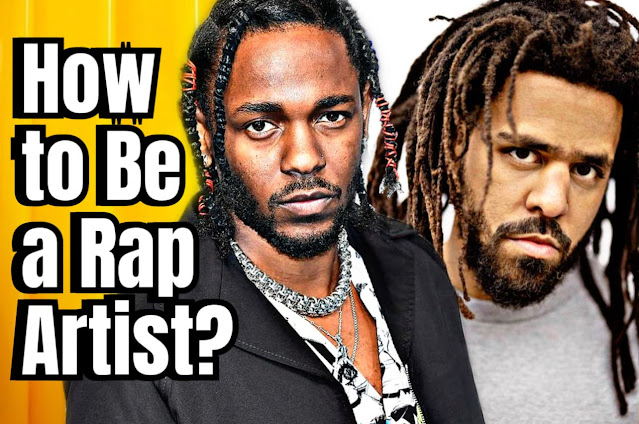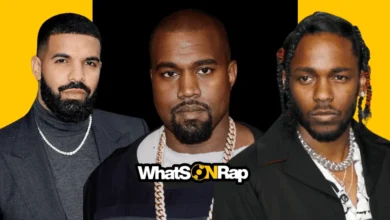Artistry Unleashed: How to Be a Rap Artist

A Comprehensive Guide on How to Be a Rap Artist
The Essence of Becoming a Rap Artist
In the dynamic realm of music, aspiring rap artists embark on a transformative journey fueled by passion, creativity, and a distinctive voice. This comprehensive guide unveils the key elements and actionable steps to help you navigate the path to becoming a renowned rap artist.
Understanding the Art of Rap
Rap, as an art form, is a dynamic expression of language, rhythm, and storytelling. To delve into the intricacies of this craft, it’s essential to appreciate its roots, acknowledge its pioneers, and explore the diverse styles that have shaped its evolution.
Appreciating the Roots of Rap
Rap originated as a cultural movement in the South Bronx during the 1970s, intertwining with the burgeoning hip-hop culture. Influenced by African and African-American oral traditions, rap became a platform for urban youth to articulate their experiences, struggles, and aspirations.
Pioneers like Grandmaster Flash and the Furious Five, with tracks such as “The Message,” laid the groundwork for socially conscious rap by addressing urban issues.
Evolution of Styles: Old School to New School
The evolution of rap brought forth distinct styles, with each era contributing to the genre’s rich tapestry. Old School pioneers like Run-DMC exemplified the rhythmic simplicity and party-centric themes of the early years.
- Discover More: The Road to Success: How to Become a Successful Rap Artist
As rap progressed, artists like Tupac Shakur elevated the narrative, infusing poetry and social commentary. Today, the New School embraces diverse influences, with Kendrick Lamar‘s intricate storytelling and J. Cole‘s introspective lyricism pushing the boundaries.
Icons of Lyricism
Lyricism is at the core of rap artistry, and certain icons stand out for their mastery of language. Nas, often regarded as one of the greatest lyricists, demonstrated intricate wordplay and vivid storytelling in tracks like “N.Y. State of Mind.” Eminem‘s unparalleled lyrical dexterity, showcased in “Lose Yourself,” solidified his status as a wordsmith pushing the boundaries of rhyme and rhythm.
Flow as a Rhythmic Canvas
Rap flow, the rhythmic pattern and the delivery of lyrics vary widely among artists. Eminem’s chameleon-like ability to adapt his flow, from rapid-fire in “Rap God” to emotive in “Stan,” highlights the versatility within the art. Jay-Z‘s smooth and effortless flow, exemplified in “Empire State of Mind,” showcases the impact of a well-crafted delivery on the overall composition.
Rhythm and Beats: Shaping the Narrative
Rap’s rhythmic foundation often relies on beats and instrumentation. The Beastie Boys, with their fusion of rap and rock elements in “Sabotage,” challenged traditional norms. Run the Jewels, known for their innovative production, blends electronic beats with politically charged lyrics, showcasing how rhythm contributes to the narrative.
Navigating the Industry
Building Your Brand
Establish a distinct brand that extends beyond your music. Your logo, visuals, and overall image should reflect your identity. Consider Travis Scott’s astute branding, from his distinctive ‘Cactus Jack‘ logo to immersive live performances.
Utilizing Social Media
Leverage the power of social media platforms to connect with your audience. Platforms like Instagram, Twitter, and TikTok offer avenues for self-promotion and interaction. Megan Thee Stallion‘s strategic use of social media and Lil Nas X‘s viral marketing exemplify effective strategies.
Recording and Producing Your Music
Setting Up a Home Studio
In the digital age, a home studio can be your creative haven. Learn the basics of recording equipment, software, and sound engineering. Tech-savvy artists like Logic started with home setups, emphasizing the importance of accessible recording spaces.
Collaborating and Networking
Engage with fellow artists, producers, and industry professionals. Collaborations broaden your musical horizons. Look at the synergy between Kanye West and Kid Cudi or the collaborative genius of Run the Jewels. Networking events and platforms like SoundCloud can facilitate connections.
Mastering the Stage
Polishing Your Live Performance
Commanding the stage is a pivotal skill. Study live performances by Kendrick Lamar, Cardi B, or Travis Scott for inspiration. Understand how they connect with audiences through energy, stage presence, and crowd interaction.
Staying Resilient and Consistent
The journey to rap stardom is often challenging. Embrace setbacks as learning opportunities. Stay consistent in honing your craft. Eminem’s resilience through adversity, Drake’s continuous evolution, and Missy Elliott’s pioneering spirit showcase the enduring qualities needed for rap success.
On how to be a rap artist, is a multifaceted odyssey. Embrace the nuances, stay true to your voice, and consistently refine your skills. The road to prominence may be demanding, but it’s also immensely rewarding.
Your unique artistry has the power to resonate and shape the future of how to be a rap artist. As you embark on this journey, draw inspiration from the diverse voices that have defined rap’s rich tapestry, and let your creativity soar.
FAQ’s About How To Be A Rap Artist:
- What are the fundamental pillars of rap that aspiring artists need to master?
Aspiring rap artists should focus on mastering lyricism, flow, rhythm, and delivery—the foundational elements that define the genre.
- How can understanding the roots of rap history contribute to an artist’s journey?
A grasp of rap’s origins, pioneers, and evolution provides cultural context, influencing an artist’s approach and contributing to a richer creative perspective.
- Why is authenticity considered crucial in rap, and how can artists develop their unique narrative voice?
Authenticity is the heartbeat of rap. Developing a unique narrative voice draws inspiration from personal experiences, societal observations, or storytelling, contributing to an artist’s authenticity.
- What role does crafting authentic lyrics play in the rap genre, and can you provide examples of artists known for their authenticity?
Crafting authentic lyrics is essential in rap, with artists like Eminem, Kendrick Lamar, and Nicki Minaj known for their raw honesty, social commentary, and playful lyricism, respectively.
- How can aspiring rap artists perfect their flow, and can you cite examples of diverse rap flows within the genre?
Perfecting flow involves experimentation. Drake’s versatility, Jay-Z’s smooth delivery, and Twista’s rapid-fire flow showcase the diverse range of styles within rap.
- Why is building a distinct brand important for rap artists, and what elements contribute to an artist’s visual identity?
Building a distinct brand goes beyond music, incorporating a logo, visuals, and overall image. Travis Scott’s ‘Cactus Jack’ logo and immersive live performances exemplify astute branding.
- How can social media platforms like Instagram, Twitter, and TikTok be leveraged for self-promotion and interaction in the rap industry?
Social media platforms offer rap artists avenues for self-promotion and interaction with their audience. Megan Thee Stallion’s strategic use of social media contributed to her rapid rise in the industry.
- What are the key considerations for setting up a home studio, and how has technology democratized the recording process for aspiring rap artists?
Setting up a home studio involves understanding recording equipment, software, and sound engineering basics. Technology has democratized the recording process, empowering artists like Logic who started with home setups.
- Why is collaboration and networking important for rap artists, and can you provide examples of successful collaborations within the genre?
The collaboration broadens musical horizons, with examples like Kanye West and Kid Cudi’s synergy or the collaborative genius of Run the Jewels showcasing the power of partnerships within rap.
- How do successful rap artists navigate live performances, and what are essential skills for commanding the stage effectively?
Commanding the stage requires energy, stage presence, and crowd interaction. Studying live performances by Kendrick Lamar, Cardi B, or Travis Scott offers insights into effective stage mastery in rap.
- What is rap music’s origin, and how did it evolve into the art form we know today?
Rap originated in the South Bronx during the 1970s as part of the hip-hop culture, serving as a platform for urban youth expression. Over the years, it evolved stylistically and thematically.
- How has rap lyricism evolved over time, and who are notable lyricists in the genre?
Rap lyricism has evolved from simple party-centric themes to intricate storytelling and social commentary. Notable lyricists include Nas, Eminem, and others who have pushed the boundaries of language within rap.
- What role does flow play in rap, and can you provide examples of diverse rap flows?
Flow is the rhythmic pattern and delivery of lyrics in rap. Eminem’s chameleon-like flow in “Rap God” and Jay-Z’s smooth and effortless delivery in “Empire State of Mind” exemplify the diversity of flows within the genre.
- How has the relationship between rhythm and beats shaped the narrative in rap music?
Rhythm and beats are integral to rap, with artists like the Beastie Boys and Run the Jewels using innovative production to blend different musical elements. This relationship contributes to the overall storytelling within rap.
- What distinguishes Old School rap from New School rap, and how have these styles influenced the genre?
Old School rap, represented by artists like Run-DMC, often featured simpler rhythms and party-centric themes. New School rap, exemplified by Kendrick Lamar and J. Cole, embraces diverse influences and pushes the boundaries of expression.
- How has rap adapted to technological advancements, particularly in recording and production?
The digital age has seen the rise of home studios, allowing artists like Logic to create music independently. Technological advancements have democratized the production process, enabling a broader range of voices in rap.
- What are the key elements in crafting a distinct brand as a rap artist, and can you provide examples of artists with notable branding?
Crafting a distinct brand involves visuals, logo, and overall image. Travis Scott’s ‘Cactus Jack’ logo and immersive live performances showcase astute branding that extends beyond the music.
